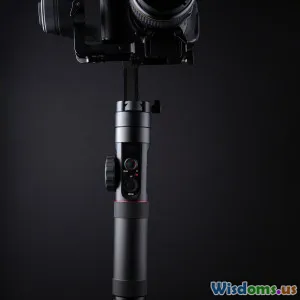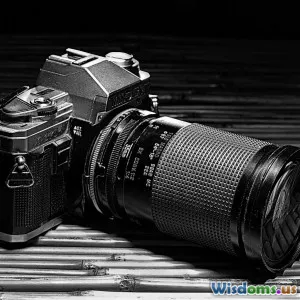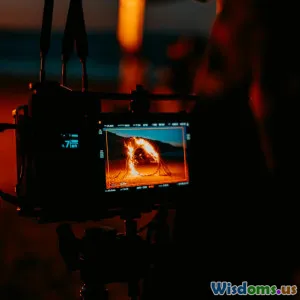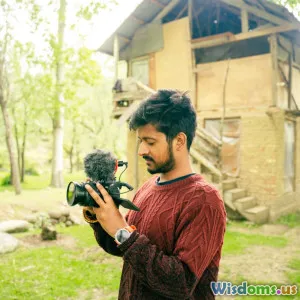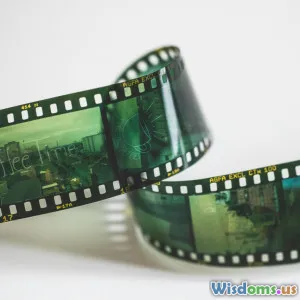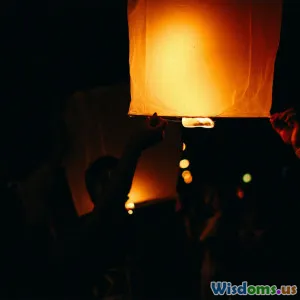
Filmmaking: Merging Technology and Creativity
6 min read Explore how technology and creativity intersect in modern filmmaking, enhancing storytelling and visual artistry. (0 Reviews)
Filmmaking: Merging Technology and Creativity
Filmmaking has always been a harmonious blend of art and technology. The evolution of this field has brought about innovations that not only enhance the aesthetic quality of films but also redefine how stories are told. In this article, we’ll explore how the integration of technology into filmmaking fosters creativity, expands possibilities, and transforms the viewer's experience.
The Evolution of Filmmaking Technology
From the early days of silent films to the current age of digital cinema, technology has played a pivotal role in the evolution of filmmaking. In the 1920s, the introduction of sound revolutionized the industry, allowing filmmakers to explore new narrative possibilities. Fast forward to the present day, and we see digital cameras, drones, and advanced editing software that have further transformed the landscape.
Digital Cameras and Filmmaking
Digital cameras have drastically changed the way movies are made. Unlike traditional film cameras, digital cameras allow for immediate playback, enabling filmmakers to make quick adjustments on set. Cameras like the RED Komodo and the Blackmagic URSA Mini Pro are now staples for independent filmmakers. These cameras provide high-resolution footage, excellent dynamic range, and the flexibility to shoot in various lighting conditions, thus enhancing the creative choices available to filmmakers.
Drones and Aerial Cinematography
The advent of drones has opened new horizons in cinematography. Aerial shots that were once only achievable with expensive helicopters can now be captured at a fraction of the cost. Drones like the DJI Mavic Air have made it accessible for filmmakers to shoot stunning aerial footage, allowing for dynamic storytelling that can elevate the visual experience.
Visual Effects and CGI
Computer-generated imagery (CGI) has transformed how stories are told on screen. Films such as Avatar and The Avengers showcase the possibilities of melding live-action with digital effects, creating immersive worlds that captivate audiences. With tools like Adobe After Effects and Blender, filmmakers can push their creative boundaries, crafting scenes that were once purely imaginative.
The Role of Editing Software
Editing is where the magic happens. Software like Adobe Premiere Pro and Final Cut Pro has made the editing process more intuitive and accessible. Editors can now manipulate footage in ways that enhance storytelling, with features such as color grading, sound design, and visual effects integration. For instance, films like Mad Max: Fury Road showcase precise editing that maintains the film's pace and intensity, demonstrating how crucial this phase is in the filmmaking process.
Storytelling in the Digital Age
The intersection of technology and creativity is most evident in storytelling. Today, filmmakers can experiment with different formats and platforms to reach audiences. For example, the rise of streaming services has led to innovative storytelling techniques, such as interactive films like Black Mirror: Bandersnatch, which allows viewers to influence the narrative.
Virtual Reality and Immersive Storytelling
Virtual reality (VR) is another frontier that filmmakers are beginning to explore. VR offers an immersive experience, placing viewers inside the story. Projects like The Invisible Hours allow audiences to engage with narratives in a way that traditional filmmaking cannot. The blending of gaming technology with film opens up new avenues for storytelling, enabling filmmakers to create more engaging and interactive experiences.
Challenges and Ethical Considerations
While technology has expanded creative possibilities, it also presents challenges. The accessibility of high-end equipment has led to an influx of creators, which can saturate the market. Additionally, ethical considerations arise with the advancement of CGI, especially concerning the portrayal of historical events or the use of digital likenesses of actors.
Conclusion
The marriage of technology and creativity in filmmaking is a dynamic and ever-evolving relationship. As filmmakers continue to embrace new tools and techniques, the possibilities for storytelling are boundless. Understanding how to leverage these technologies effectively allows creators to push the envelope, crafting films that resonate with audiences in profound ways. In this digital era, the future of filmmaking looks bright, inviting innovators to continue merging technology with creativity for years to come.
Rate the Post
User Reviews
Popular Posts










